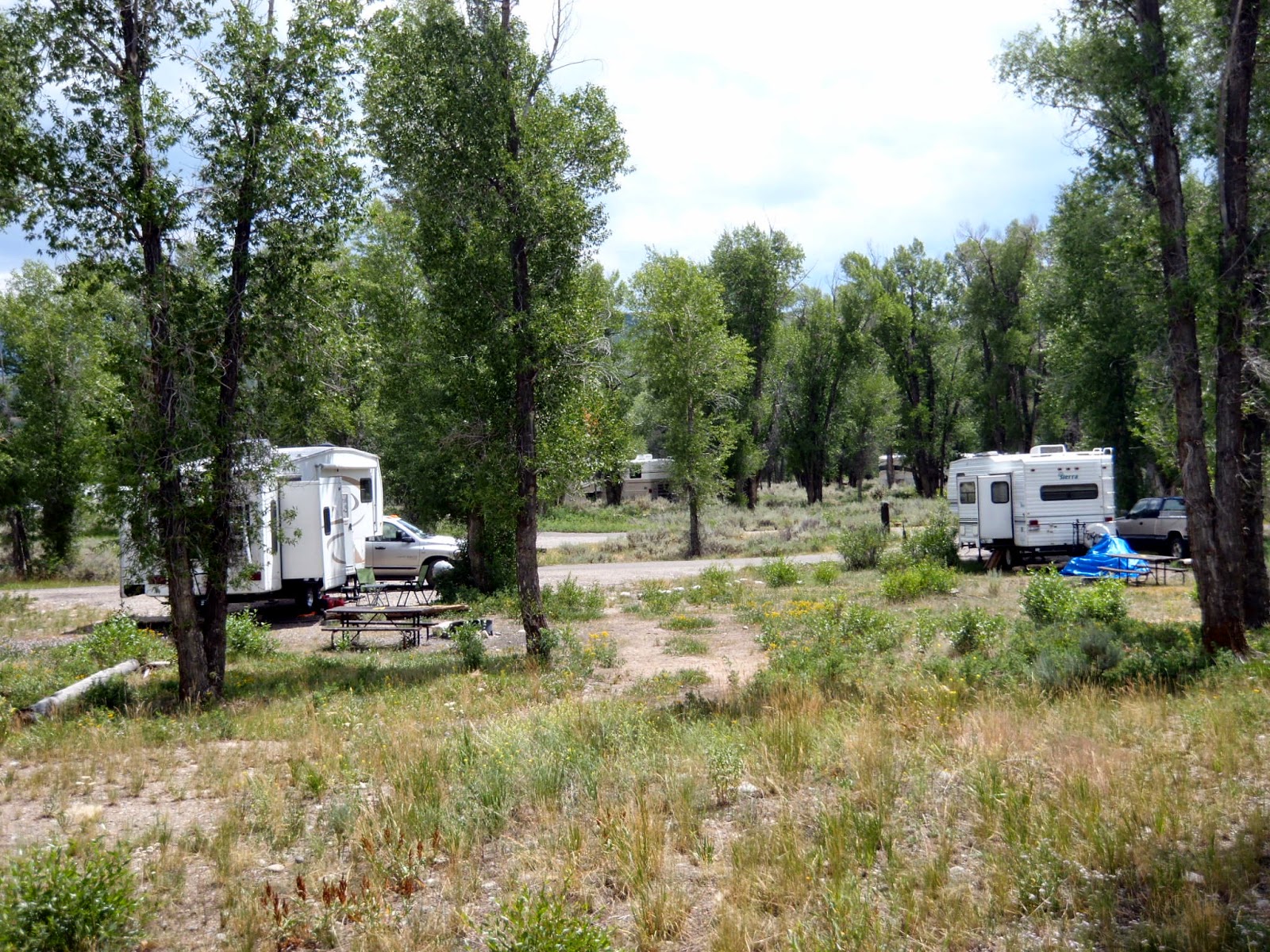We are now about halfway through our stay in Montana. As I’ve often heard, the scenery here is spectacular.
 |
| Moose Creek Flats campground |
 |
| Gallatin River behind our campsite |
Unfortunately, we’re not going to see as much of it as I had hoped. In order to stay within my budget, I must avoid commercial RV parks, where overnight rate can run $35 to $50. Instead our travel plans for the summer have been based on stays in National Forest campgrounds, averaging $7 to $10 per night. As we have been traveling further north, it seems to become harder to locate campgrounds that will accommodate a trailer as large as mine. When I bought the trailer, my research indicated that a 31 foot fifth wheel would work. However, as we have traveled this summer I have found that many National Forest campgrounds maximum length restriction are 24 feet or less and those that can accommodate large units may only have a few sites for them. So, we have been moving less frequently than we had planned and been making day trips to see of much on the countryside as we can from our base.
Our base for the past two weeks as been in Moose Creek Flats campground, which is adjacent to the Gallatin River about 10 miles north of Big Sky, Montana.
 |
| Our campsite on the bank of the Gallatin River |
We will be leaving here tomorrow, but will only be moving about three miles north to Greek Cheek campground (which has a site that can accommodate my rig) for ten more days. Then we will start working our way east. My plan is to stay north as long as possible before turning south for Du Quoin, Illinois at the end of September. That should give us a chance to experience some real fall weather.
The area around Big Sky truly lives up to its name. At night here the stars blanket the sky and, since we are far from light polluting cities, the Milky Way and shooting stars are clearly visible. The town of Big Sky itself is interesting in that it is a ski resort that seems to have been built within the past twenty years or so. Everything seems new and all of the buildings have a rustic architectural style. Even the grocery stores look like houses. This is cool from the outside, but makes the inside layout really strange.
 |
| Grocery Store in Big Sky |
 |
| Big Sky, Montana Post Office |
 |
| Big Sky Chapel |
 |
| Soldiers Chapel and Cemetery |
Since we are staying in Montana until early September, I plopped down my $70 for a non-resident fishing license and have been fishing most days, weather permitting. There is a hatch of spruce moths here most mornings and that gets the trout rising to dry flies. It’s been many years since I have fished dries and it took me a few days to get accustomed to seeing the fly floating on the surface.
 |
| My first Montana Rainbow Trout (about 10 inches long) |
At first I though my eyesight had deteriorated to the point that I could no longer see the fly. But after a couple of days and a few larger flies, I’ve found that that tracking the fly on the surface is a skill that returns with practice. I’ve had some success, though I enjoy being on the river whether I catch fish or not. The cool nights (temps in the 40s) and the mild days (temps in the 70s) beats the heck out of the triple digits in Texas this summer.
After five days of rain, today is the first day of sunshine we have had for a while. The rainy weather curtailed the moth hatches and also caused the river to turn milky for a few days from runoff in one of the tributaries that is impacted by an old mining operation. With the rain stopped, the river is clearing. As I’m sitting here getting this post ready to go, I’m beginning to see some moths flickering past my window, So, its time to put the computer away and grab a fly rod.




.jpg)













